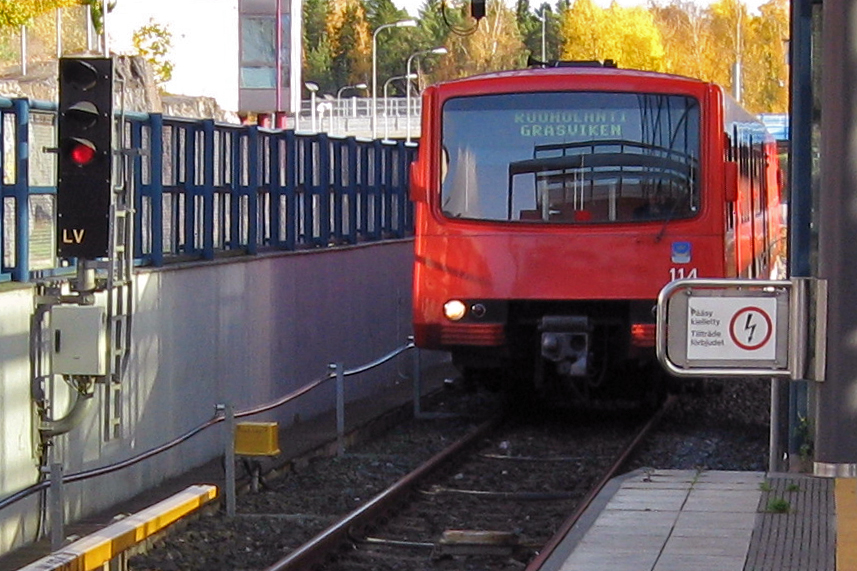Finnish railway signalling on:
[Wikipedia]
[Google]
[Amazon]
The
 The
The
signalling system
In signal processing, a signal is a function that conveys information about a phenomenon. Any quantity that can vary over space or time can be used as a signal to share messages between observers. The ''IEEE Transactions on Signal Processing'' ...
used on the railway network in Finland comprises color-light signals and fixed signs, used together with the Automatic Train Control
Automatic train control (ATC) is a general class of train protection systems for railways that involves a speed control mechanism in response to external inputs. For example, a system could effect an emergency brake application if the driver d ...
system ATP-VR/RHK (an EBICAB EBICAB is a trademark registered by Bombardier (later Alstom) for the equipment on board a train used as a part of an Automatic Train Control system. EBICAB was originally derived from Ericsson's SLR system in Sweden. Most trains in Sweden and Norw ...
900 system better known as JKV, fi, junakulunvalvonta).
Main signals
The main signal can have any of the following aspects: If a main signal doesn't protect any switches or the speed restriction on a diverging route is the same as straight route, the signal doesn't need to show the ''Proceed 35'' aspect and therefore the yellow bottom light may be absent. The two lamp version of the old system has the lights reversed, i.e. red at the top and green at the bottom.Distant signals
The distant signal is located at least before the main signal. It may also be located in the same post with a ''main signal'', below it. In this combined arrangement, whenever the main signal shows a stop aspect, the distant signal doesn't show any aspect at all. A distant signal can have any of the following aspects: Note: Although the green light of the old system distant signal used in Helsinki area is named ''Expect Proceed'' aspect, the next main signal may in fact be showing the ''Proceed 35'' aspect. Therefore, the driver has to act as if the signal aspect is indeed ''Expect 35''.Block signals
A block signal can show any of the following three aspects: Block signals are being replaced by combinations of main and distant signals, and no new block signals will be installed.Dwarf signals
A dwarf signal is used for controlling shunting movements. It can have any of the following aspects: A dwarf signal may also be placed in conjunction with a main signal. If the main signal shows any other aspect than ''Stop'', the dwarf signal shows the ''Proceed with caution'' aspect.Bridge signals
Bridge signals are small signals used to display the orientation of amoveable bridge
A moveable bridge, or movable bridge, is a bridge that moves to allow passage for boats or barges. In American English, the term is synonymous with , and the latter is the common term, but drawbridge can be limited to the narrower, historical d ...
. They can have any of the following aspects:
Repeaters
Repeaters are sometimes used to repeat the aspect of the main signal in the Helsinki area in places where the main signal is not clearly visible.Helsinki Metro
 The
The Helsinki Metro
The Helsinki Metro ( fi, Helsingin metro, sv, Helsingfors metro) is a rapid transit system serving Greater Helsinki, Finland. It is the world's northernmost metro system. It was opened to the general public on 2 August 1982 after 27 years of p ...
signals differ from those used by the railways.
Main signals
Some aspects may be shown using a signal with only three lights, pictured on the right.Distant signals
References
*External links
{{Railwaysignalling Railway signalling in Finland